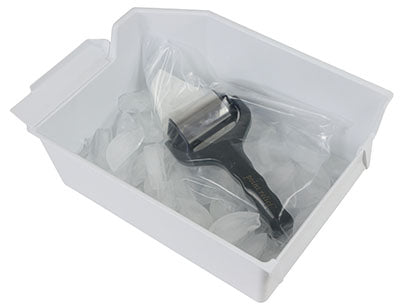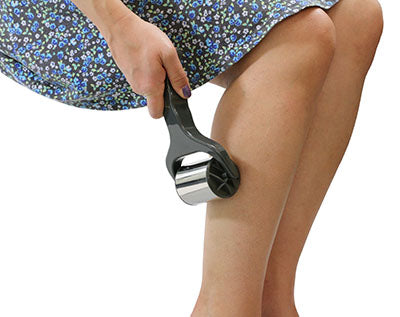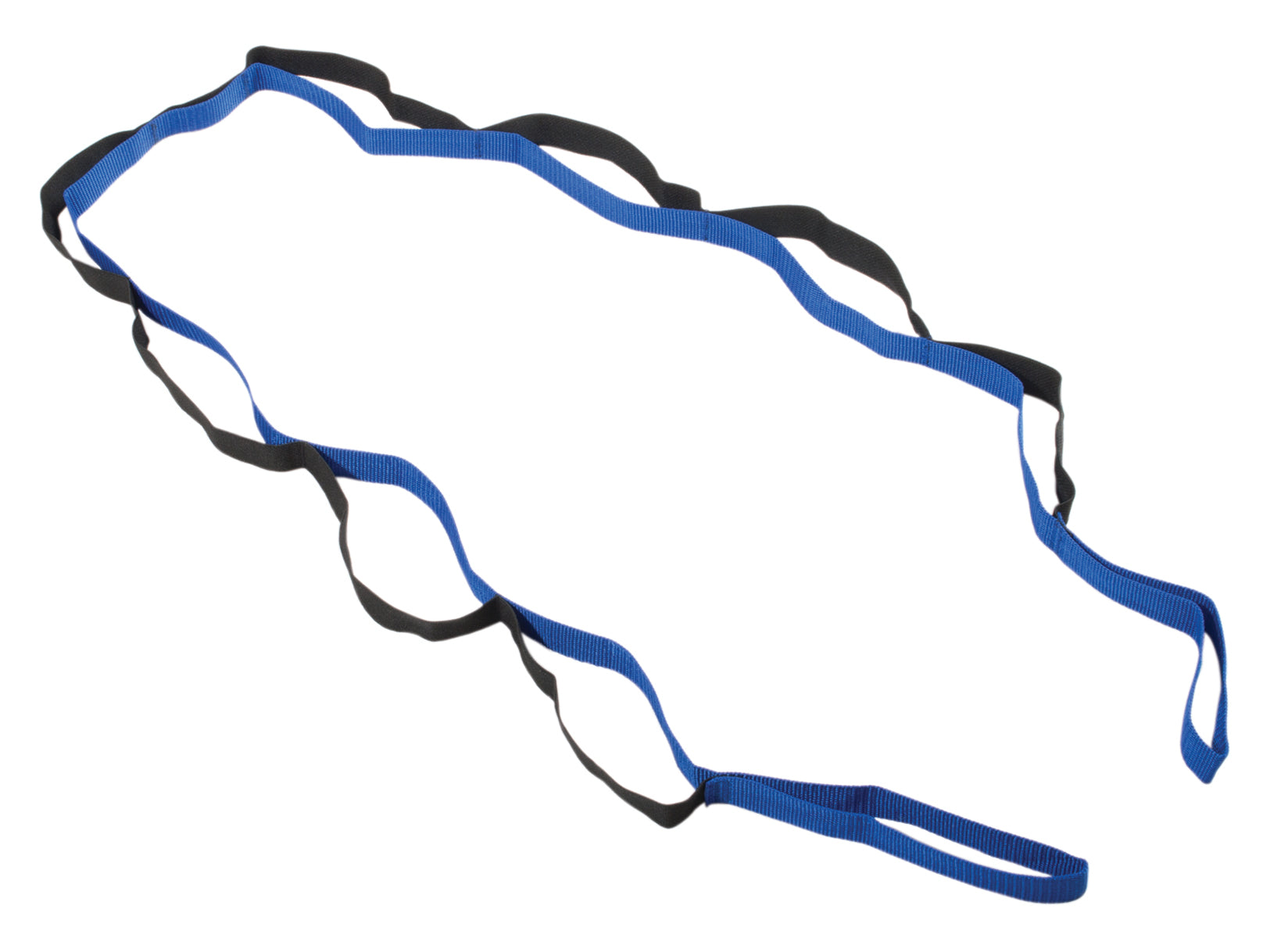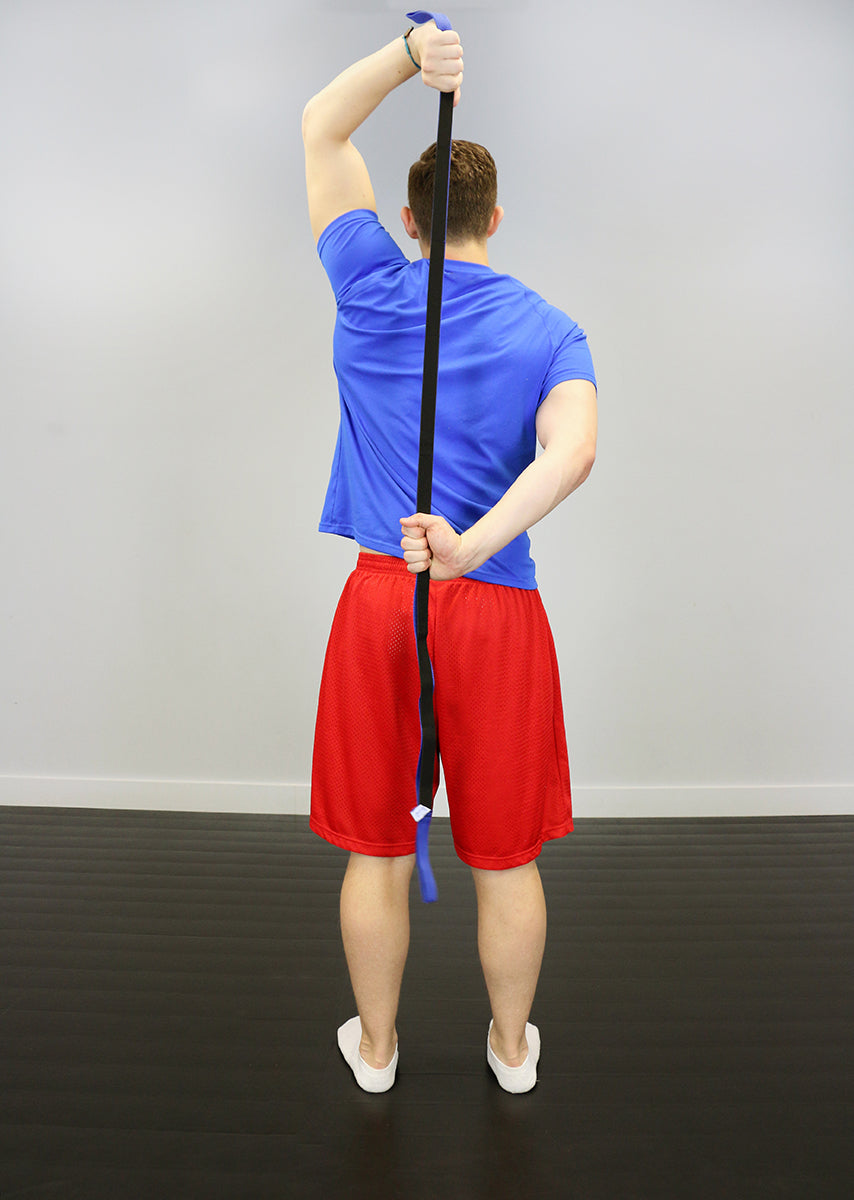
I so badly wish I had taken video of myself the first time I touched a barbell. Partially for amusement, partially because I’m a little infatuated with watching how we move. A few years later, the appreciation I have for motor learning has grown exponentially: I’m finally (slowly) figuring out how to blend methods I love with traditional patterning and neural control. Coming off a surgery that sidelined me from distance running, I was looking for something else. One of my PT classmates, Stacie, competed in figure shows, as well as in the fitness category. I saw pictures and was completely enamored with the idea of muscularity, shiny suits, and the excuse to wear obnoxiously shiny jewelry. Stacie intimidated the crap out of me. She was everything I wanted to be: strong, confident, hilarious, and someone that had a way of encouraging people to open up to something new. We were two of a few in our 66 person class that had similar experience before starting PT school with high caliber athletes, but Stacie always carried herself in a way that instilled belief in what she was saying, where I was (and still am) less confident in my abilities and thoughts. When she asked me to come to the gym with her, I hesitated. I was the most out of shape I’d ever been and completely embarrassed. Plus, I was intimidated by the similar depth (though different schools of thought and exposure) of clinical knowledge we had, and the confidence she carried with hers. I come from a background using a school of thought called PRI. I wasn’t sure I’d ever be able to incorporate these concepts in a way that applied to lifting. Heck, I didn’t even know how to lift. I finally decided to go with her, figuring I’d always been strong and fast on the field, I couldn’t embarrass myself that badly, and maybe I’d have some weird epiphany about how to bring PRI into something I knew nothing about.
RECENT: Women and Imposter Syndrome
Remember trying to figure out how to squat to depth, even to a box, how to hip hinge, what neutral spine felt like? Take yourself back to the FIRST time you touched a barbell and how foreign it felt. Remember asking yourself what certain patterns “felt” like and the exploration of how to move efficiently, even with just a dowel? Blinders come off and all of a sudden your movement is no longer taken for granted — you actually start thinking about mechanics in simpler less biomechanical terms. I obsessed over this. I’d go home and squat in front of the mirror and toy with squat form, knowing nothing about mechanics, going just off intuition and what “felt” right. What I learned those first few weeks with Stacie was the importance of the simple things. I’d talked to her a bit about PRI, and as much as I kept utilizing it at first, I think Stacie knew I’d neglect patterning, stability, structural support, motor control — all the things I nerd out about now because I didn’t when I needed to. Years later, when it came time to finally take the time to repattern and reset, I needed a combination of both PRI to find pelvis neutral, and more traditional drills to drive the pattern to hold under weight. The asymmetry I fell into was one that I recognized, and I could repattern and reset easily enough without weight, but trying to add strength to my squat without falling back into that pattern was a different story. I think that battle is one that we as athletes face routinely: building strength back into a proper pattern without falling back into old habits.

I talk a lot about the perspective called PRI, or a viewpoint from the Postural Restoration Institute. Before grad school, I worked as a PT aide through high school and undergrad. It seemed like most people were getting the same treatment, same exercises, and same approach. It left me feeling like there had to be more. If this was all there was, I needed to rethink going to physical therapy school. I started working at Rebound, the clinic where I practice now, and was introduced to PRI. People were getting better faster, coming back stronger, and running more efficiently for greater distances with this weird stuff that got really picky about people’s breathing. I’ve seen these things work clinically for a long time, but most the coursework I’ve done was either before or during school; I have a lot of growth to do clinically given I actually have a chance to apply it now. One of my biggest avenues of practical lab work has been finding ways to integrate PRI concepts with lifting — and it's a lot of trial and error. I’d always find ways to get myself “neutral" unloaded, but the pattern would re-emerge as soon as I was at a certain intensity in my training. There are a number of ways to address the same problem; that is to say, I don’t see PRI as the only option, but the combination of PRI and introduction of targeted traditional work, like what my friend had shown me, is how I added poundage and stability to my total. As much as I tried what felt like “everything” people kept telling me to do (and gave it time and due diligence), nothing held, and my patterning never changed because I never got to “why” it existed to begin with. Have you noticed it’s become a new popular thing to acknowledge and correct a hip shift? And have you noticed that MOST times, when people have a hip shift, it’s nearly always to the same side? Pick 10-15 people and watch them squat. That isn’t a coincidence. This pattern exists for a reason to the point that there’s a name for it. If you also have this shift, you aren’t as broken as you think — you actually make a lot of sense. Take comfort in that. We do fall into sort of predictable patterns, to some extent. And the way we move, though highly individualized, carries common themes we access to generate force to stabilize and move heavy weight. Layer on compounding factors of daily stressors, postures, local injuries, and it becomes more difficult to tease through. We need to alternate out of that pattern when appropriate, and strengthen the alternate pattern from a stabilization/motor control standpoint, as well as from a purely strength based standpoint. Bridging the gap between rehab and training was an experiment for me and I saw huge payoff. I’ll break down how I approached my own rehab from the perspective that I’ve written about in the last few articles regarding addressing the why, utilizing test-retest, and progressing the pattern to hold under load. I’ve hesitated to write about this because I am very much a novice in all aspects of this — PRI and application of the principles isn’t rocket science but certainly requires practice, time, and a great amount of learning before being well versed, just like any specific body of knowledge. Please keep in mind that I have the benefit (and to some extent an unfortunate bias) of having an idea of what I’m looking at. In retrospect, there are things I would have done/approached a little differently, but given the degree of pain I was in and the extent to which it altered my movement pattern for so long, a 353-pound sleeves-only squat at 123, pain free, was far above and beyond what I expected. Here’s a look at what I did to correct my hip shift and dysfunctional movement as an example of practical application of the concepts I’ve identified and spoken vaguely about in other articles.
I addressed local tissue inflammation and pain.
Two things I wish we understood better with regards to training and competing: the inflammatory cycle and the power of pain/what pain is. Pain science is becoming more and more popular these days, and for good reason: it changes almost everything about how your brain will let you move in a mobility-stability relationship. Most of us inherently know that inflammation causes pain. That area needs to be permitted to heal, through a complex series of physiologic interactions far beyond the scope and purpose of this article.
RELATED: Assessing Your Dysfunction — Finding Why
I’d trained so consistently that it took quite a while for that inflammation to actually come down. I had a very limited amount of soft tissue work done that was supplemented by motor learning into functional and painless patterns (more on this later). Interestingly enough, how many times, even after something is healed, do we have some sort of odd “awareness” of a pain area? Pain science is an emerging field in physical therapy, and one especially relevant to us because so many of us DO have chronic aches and pains at this point. Lorimer Moseley is one of the most visible advocates of pain science right now, and he does a fantastic job of explaining the power of pain, especially pain that has a level of familiarity to it, where our brain will interpret the pain signal similar to how we had experienced it in the past, regardless of the “actual” level of arousal. Remember, we’re built to survive, and many times our brain behaves as such. Our levels of anticipation, integration of other sensory input (such as visual, or auditory), and perceived effect have been demonstrated to increase (or decrease) pain in a number of studies, where pain is really a function of what your brain tells you based on a series of processes. One rep after another becomes habit, and the influence of pain on technique and patterning is notable. I had to regroove my pattern, but I knew that as long as the tissue was as inflamed as it was, no good was going to come of it. So, I stopped training my squat for a while until tissue quality had improved significantly. In the mean time...
I identified the why.
PRI language: I was a PEC pattern with a strong underlying left AIC, right BC. What this means: my lumbar paraspinals took over for perceived stability, my “hip extension” was really back extension, I had (er, have) a weak core and engage my anterior core poorly, and my pelvis was shifted into a predictable pattern that I had now trained into over the course of a couple years. So the problem list: weak glutes, poor anterior core control, poor bracing, overdevelopment of certain areas, and something weird going on with my pelvis in terms of directional preference or orientation. This pelvis orientation is the pattern I mention, and is a portion of the “why.” I then looked at compounding factors. I’ve had four ankle surgeries from years of playing soccer, and my ankle mobility is limited in a way that very likely won’t come back to be equal to the other side, as well as an abdominal surgery that I probably didn’t follow with sufficient and high quality core work. I'll come back to these weird AIC/PEC terms: what they signify in PRI lingo is a predictable pattern of pelvic rotation. Very simply put, in a left AIC pattern, the left hemipelvis is tilted forward, the right one back. There are some other nuances to this with regards to tri-planar motion (one of PRI’s big concepts), but essentially, what this does is contribute to a relative position of being “on” the right side, or the equivalent of right stance. Check it out.
This photo on the left, if you have the eye for it, will show you a relatively externally rotated and abducted femur, secondary to the pelvis movement on the femur (the eccentric portion of the squat). Look at where the hip joint is, and the angle of the femur, and it may be easier to see. There are probably a lot of you that will look at that picture and say, “that’s what it looks like when I squat.” That’s the hip shift at least a dozen athletes have asked me about in the last month. The photo on the right was taken during my prep for RUM9. Not perfect by any means, but a whole heck of a lot better. Bar weight in the photo on the right is actually 50 pounds more. So more weight, with more symmetry. That's a win. The corrections for these asymmetries are actually pretty cool if you’re mechanically minded. You can almost think of it as using where muscles attach on bones as purchase points, or real estate, that can be used to “pull” back into a more optimal position by generating tension on specific, targeted muscles, like a rope, then training that position. I’d been able to get myself neutral without weight easily; my problem was getting it to hold under load.
I made my rehab specific.
This was the convergence of patterned, targeted exercises like the ones Stacie had given me with my “why.” These are the things I’d neglected for FAR too long, and therefore had to put in a painful amount of time to implement and correct. Part of my issue was a pelvic asymmetry. I needed to address the lagging parts identified above (glutes, anterior core, stability, and overall mobility), but I realized that in unilateral movements I was going into that same asymmetry; my pelvis was still rotating on my femur, and if I’d taken pictures and cut out the silhouette of my hip position, it’d be pretty similar to the squat photo on the left. One of the muscles I needed to facilitate correction to the pelvis was my left adductor. What I did to strengthen that pattern was, in a lot of my unilateral work, I actually put myself into left AFIR (think sitting into the left hip, the position I was unable to find in my squat), and contrary to what we USUALLY do with putting bands around my knees to encourage abductor activation, I positioned the band pulling “out,” so I had to actively work to keep myself “into” my left hip. Not for everyone, but a good example of how at times, we need to think differently to address “why.” I did eventually do more traditional banded work for abduction, but only after I could keep neutral and emphasized proprioceptive internal cues like “feeling” my left heel and midfoot. When doing glute strengthening, I have a huge tendency to let my lumbar paraspinals take over. I wasn’t actually extending at the hip — I was extending from my lumbar spine. I HAD to get picky about the quality of all my movement if I was going to get what I needed out of it. I did simple things, like an extra set of unilateral hamstring work on the left side to keep that left hemipelvis supported. I constantly asked myself what I felt. My mindset shifted from “fixing” to exploring, and my body told me more than any person or text ever could by integrating a test-retest model. Some of the tests I used were simple ones, others were more of a qualitative movement based screen. Either way, I needed to know I was actually creating change.I got the most out of my training without falling into compensatory patterns.
This was more out of frustration than anything. I wanted to do the heavy work, but I was putting so much time into correcting patterning that I wasn’t willing to waste a day of it to regress. If I was going to come back to a meet soon, I was determined to have a damn good squat, pain free, partially because I had a little (okay, big) chip on my shoulder. I promised myself I was going to get myself the most I could out of every training session. I took myself right up to the threshold of pain-free, symmetrical squatting and emphasized the crap out of bar speed and technique. For me, this threshold was 205, per Swede. He was my voice of reason every time I wanted to bail. Not a high percentage of my max, and I still saw huge returns. These are a lot of big words, weird terms, and some things that may not make a whole lot of sense. What I hope you’re able to take away from this is:- Your asymmetrical squat makes sense. There’s a reason for it, it has a name, and it’s fixable. Most people won’t squat completely symmetrically and that’s not a bad thing. The degree to which your asymmetry manifests may play a larger role in whether or not it becomes painful or pathological.
- Either way, most of us fall into a category requiring better lumbopelvic control via a more balanced reaction of the anterior core and back extensors. Train your glutes and hamstrings, and if one side feels different, pay attention. Ask yourself questions and listen.
- Pain is important! It’s going to drive a lot of how your brain lets you move. Chronic and acute pain are different and require different management strategies, but recognize that a pattern should not be routinely painful, no matter how “strong” it makes you under a bar.
- Your pattern is everything. You keep training it, it’s going to stick around.





































































